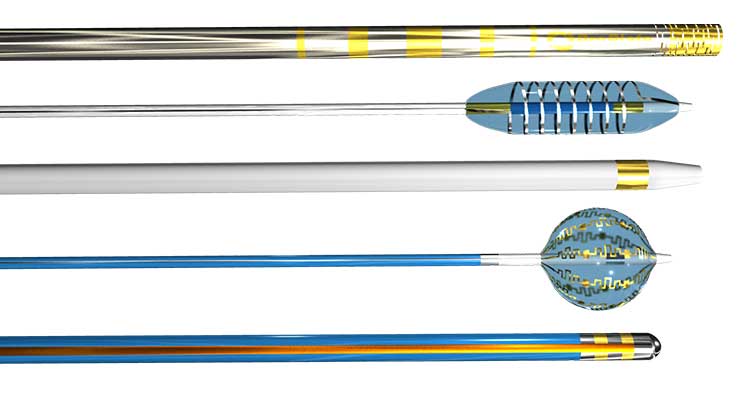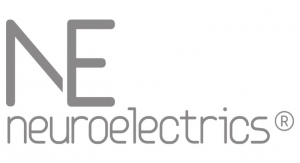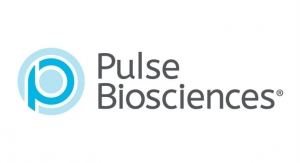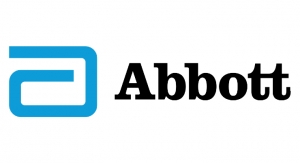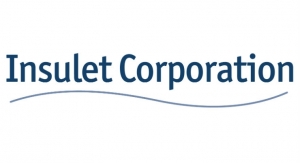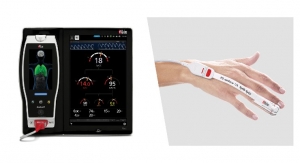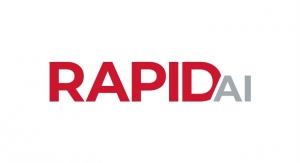Mark Crawford, Contributing Writer07.21.20
Medical device engineers are always looking for new ways to improve the performance of medical device substrates through the use of engineered coatings, especially as device components become smaller and are designed to deliver greater functionality. For example, thin films produced by electrochemical processes such as electroplating and vacuum processes such as chemical vapor deposition or physical vapor deposition (PVD) offer new opportunities for device engineers to exploit the unique properties of their coating materials and still be able to use standard base substrates, both metals and polymers.
Coatings are engineered to functionalize medical device surfaces for a wide variety of medical applications. They provide valuable physical properties that may not be present in the underlying bulk substrate, such as enhanced electrical stimulation or sensing, biocompatibility, improved mechanical properties such as wear resistance, increased radiopacity, and the ability to elute drugs to selected parts of the anatomy. Surgical coatings enhance the conductive abilities of electrosurgical devices, improving both surgeon performance and patient outcome and safety.
As a result, surface coatings are a growing market, driven by increasingly stringent regulatory controls, antibacterial requirements, and the ability to withstand aggressive sterilization protocols to combat “superbugs” and other pathogens. In addition, an aging global population that requires joint implants is another key factor that will “drive the expected revenue for medical coatings to $10 billion in 2020,” said Steven Muccino, general manager for Aalberts, a Woonsocket, R.I.-based supplier of thin-film PVD coatings for the medical device industry. “There are many research groups projecting that by 2027, medical coating revenue will almost double to $19 billion.”
Current Trends
Medical device manufacturers (MDMs) are especially interested in hydrophilic, antimicrobial, and drug-eluting coatings for the cardiovascular and orthopedic markets. Advances in medical technologies, including imaging equipment, ultrasonic and other sensor-based tools, and delivery systems for medicines all require specialized coatings. In particular, thin-film coatings that enhance electrical properties such as impedance and charge storage capacity of electrodes used for stimulation and sensing of electrical signals within the body are increasingly popular for applications such as pacemakers and neuromodulation devices. “Such coatings have specific chemistries and microstructures to maximize efficient charge exchange with tissue, allowing devices to impart higher charges, sense smaller voltages, and increase battery life of implantable devices,” said Bénédicte Thiébaut, technology director for medical device components for Reading, U.K.-based Johnson Matthey, which specializes in a variety of processing technologies, including surface solutions for medical devices.
“Requirements for polymer coatings for medical applications are becoming more stringent on a daily basis,” added David DiBiasio, vice president for Precision Coating Company, a Woonsocket, R.I.-based provider of coating technologies to the medical industry, especially single-use devices, as well as reusable instruments and tools. “For example, wire platforms that rotate at as much as 12,000 rpm for clot removal require precise applications of coating to avoid ovality and run out. We use automated application to ensure uniform depositions and tight tolerances.”
Other platforms such as transcatheter aortic valve replacement require engineered coatings that provide excellent dielectric properties, low friction, and the other beneficial characteristics that are typically provided by polytetrafluoroethylene (PTFE). Advanced tight-tolerance masking capabilities are also a common requirement for this type of medical device.
Newer, more exotic substrates often create the need for coatings with lower cure temperatures, but that also maintain lubricity and bondability. “Substrates like Nitinol, for example, require low cure temperatures to avoid annealing and destruction of the properties that make the material attractive to the industry,” said DiBiasio.
Miniaturization and the increase in the varieties and types of minimally invasive surgical procedures are driving demand for smaller stimulating and sensing electrodes. “Electrodes with a smaller geometric surface area can impart higher current densities and can be more specific at sensing or imparting charge as compared to larger electrodes,” said Thiébaut. “However, the reduction of the electrode size will also impact the signal-to-noise ratio. Some coatings such as iridium oxide have been shown to help alleviate such problems.”
As medical devices and their components become smaller, it is also important to achieve very thin, uniform, high-performance biocompatible coating capabilities. “This applies to a wide range of applications, from precision manufacturing tools to the tissue contacting surfaces of implants,” said Dick Molin, medical market manager for Specialty Coating Systems, an Indianapolis, Ind.-based global parylene conformal coating service provider. “It is especially true on critical electronics, sensors, and elastomers.”
There is also a growing trend for non-reflective coatings, which reduce glare in endoscopy or minimally invasive surgical environments that use robotic surgery methods. Many vision systems and high-magnification cameras have trouble with light reflected from a high-gloss coated surface; therefore low-gloss coatings for these applications are critical for reduced surgeon fatigue and improved surgical outcomes.
For James Morris, president and CEO of Surgical Coatings, a Sedalia, Colo.-based provider of surface coating services for medical devices and surgical equipment, the most significant trend he has noticed is the request for in-process inspection controls. In-process inspections feed into valuable failure mode and effect analysis and the process control plans used to control risk. “Tightly controlled in-process inspections help reduce scrap and improve the quality of the finished surface coating, ensuring that coating applications and integral processes are managing risk appropriately,” he said. “The coating process must capture feedback from statistical process control and in-process inspection. Achieving repeatability and reliability on high-volume, single-use device lines are critical to finished devices utilizing any surface coatings.”
Ultimately, the medical device industry is constantly looking for the proper balance between performance, cost, and deliverability (how long it takes to complete the process). Some high-performance coatings are so expensive they are not an option for typical medical device applications; others take so much time to apply they cannot be scaled for production. “Success means providing solutions that balance proven technologies and novel breakthroughs that are reliable and where execution is driven through extensive process validations,” said DiBiasio. “The industry is always seeking solutions that enhance their products, allow for more innovative designs, and improve reliability.”
What OEMs Want
OEMs constantly press their coating partners for greater functionality at lower cost. They want coatings that provide multiple surface functionality across a wide range of applications. For stimulating and recording electrodes, more OEMs are seeking reduction of impedance, reduction of pacing threshold, and increased radiopacity of low-density metallic implants such as Nitinol stents.
“Coatings continue to be called upon to enable medical devices to achieve stringent performance and reliability requirements, all while adding little or no dimension/mass in a benign, biocompatible fashion,” said Molin. “The coatings market in the medical segment has outpaced the overall medical device market, signaling an increasing call for high-performance solutions to conformal coating needs.”
Lubricity is in high demand. Michael Brown, vice president of sales and marketing for Applied Plastics, a Norwood, Mass.-based supplier of PTFE-coated products for use in the design and manufacturing of advanced catheter systems, noted MDMs are continuously pushing for more robust coatings with a low coefficient of friction, especially for the minimally invasive catheter market. “Many customers use our coated mandrels as manufacturing aids or as a medical device such as a core wire, stylet, or guidewire,” said Brown. “Other applications for our PTFE Natural material are coated hypotubes, pull wires used in deflectable shafts, reflow mandrels, or tapered tipping and welding mandrels.”
MDMs also want thinner coatings and ever-tighter tolerances to meet enhanced performance and quality specifications. “Every manufacturer anticipates the coated tolerance conversation,” said Brown. “These discussions typically pertain to a new opportunity or the next generation of a device.”
Brown, however, has found MDMs often specify a tighter tolerance beyond what is actually required for their devices. “Custom tolerances can certainly be accommodated,” said Brown. “However, after reviewing the project, we can usually show MDMs that our standard tolerances will meet their performance needs and quality and budget requirements, saving them time and money.”
Of course, OEMs want the highest possible quality at the lowest possible risk, which includes being certain products remain fully traceable across their lifecycle. “Our customers are requesting superior finishes, shorter lead times, validated processes, and new technologies to ensure their product stands out in the market,” said Kathy Siri, sales manager for Danco, a Warsaw, Ind.-based provider of metal finishing, anodizing, passivation, and chrome coating for medical device manufacturers.
Risk is further reduced (and time saved) by using “one-stop shops” that are vertically integrated and can perform more services under one roof. Also, as regulatory bodies continue to restrict the use of chemicals, additives, and plasticizers common in most coating formulations, MDMs are asking for more extractables and leach testing for coating chemistries to assure biocompatibility and environmental safety.
“For example, we are seeing a greater number of requests for environmentally friendly solutions such as halogen-free coatings, all with the continued requirement to meet regulatory requirements, including ISO 10993 biocompatibility, RoHS [Restriction of Hazardous Substances], REACH [Registration, Evaluation, Authorization and Restriction of Chemicals], and the upcoming EU MDR [Medical Device Regulation],” said Molin.
Cost and performance balance, quality systems, delivery time, scalability for production, and a combination of cosmetic appeal and function are other common requests of OEMs. Coatings must also be tough enough to withstand harsh sterilization cycles and still maintain their colors and cosmetic appeal.
Technologies Advance
Advances in manufacturing technologies for medical devices can make traditional coatings and application methods less effective, especially the incorporation of additively manufactured metal substrates within medical devices—for example, acetabular cups. “As such, these form porous metal structures which cannot be effectively coated using traditional hydroxyapatite application techniques such as plasma spraying,” said Richard White, principal consultant for materials for Lucideon, a global provider of materials technologies and processes to the medical device industry, with laboratories in the U.K. and the United States. “However, with some of the newer solution-based deposition technologies, internal pore structures can effectively be coated with hydroxyapatite. Also, co-printing of different materials to form graded coating structures, even including biological materials, all become viable opportunities.”
Additive manufacturing (AM) can also be used to deposit thin coatings on medical device surfaces. “For example, AM enables more efficient usage of metals and allows for miniaturization, precision, and more reliable processes due to the automation,” said Thiébaut. Johnson Matthey has developed a process for the deposition of thin platinum-based conductive coatings using digital printing techniques—as thin as 10s nm with a resolution of 10s µm in the x and y planes, the platinum films can be deposited on a wide range of substrates, including polymers. This new technology could lead toward new processes for the manufacture of electrodes.
Automation in coating applications has gained considerable traction over the last few years in the medical device coating industry. Process controls and automated systems that carefully incorporate ISO 13485 quality management systems are especially in demand by MDMs looking for coating partners with quality systems that mirror their own, thereby establishing an immediate level of confidence in their coating processes and technologies. Automated coating applications are critical for improving quality by removing the variable human element from the coating application process, while lowering overhead and routing times on high-volume product lines. “Once companies develop and implement custom PID [proportional-integral-derivative] control logic, they will realize remarkable gains in the capabilities of coating processes,” said Morris. “We have achieved process capabilities higher than six-sigma or two-standard deviations on several of our coating applications.”
Nanoindentation machines help characterize the mechanical properties of coatings such as hardness, elastic modulus, and creep. Nanoindentation gives engineers and coating applicators the data they need to select the right coating for each medical device, based on well-established mechanical properties. Historically, the characterization of coatings has been problematic for the medical device industry, relying on qualitative tests such as adhesion and flexibility that often overlap so much it is hard to derive meaningful data. Nanoindentation takes a more quantitative approach to coating characterizations by allowing the use of significant mechanical properties in the evaluation of candidate coatings for medical devices.
Powder- and liquid-coating application technologies advance every year. Pressure-reduced technologies in liquid applications have increased transferrer efficiency and typically provide higher quality surface finishes, while still maintaining regulatory compliance in most states. “For powder-coating applications,” noted Morris, “the most significant innovations have come from the manipulation of Faraday effects. We have developed proprietary powder-coating applications using state-of-the-art CAD and CFD software and process-control feedback algorithms. This has vastly improved coating quality and control. For example, we have reduced reject and scrap rates to less than 2 percent on average across all coating applications and product lines with respect to varying inspection controls.”
Conductive Coatings
Metal coatings are a key component in electrodes. Stainless steel and Nitinol are excellent base materials for surgical components, but do not offer adequate electrical and thermal conductivity. It is costly to fabricate components that are pure precious metal; in addition, standard fabrication methods for precious industry standard metals are not usually suitable for a soft metal such as gold. “Additive processes for creating thin coatings of precious metals can allow for a more manufacturable and cost-effective electrode that meets performance requirements, while still maintaining the desired properties and manufacturability of the base stainless steel or Nitinol substrate,” said Ross Peterson, vice president of business development for ProPlate, a Minneapolis, Minn.-based provider of metal coating technologies for the medical device industry.
MDMs are developing flexible devices that combine the functionality of electrical circuitry with a thin flexible polymeric substrate that has the capacity to conform better with targeted organs. Conductive polymer coatings such as poly(3,4-ethylenedioxythiophene) polystyrene sulfonate (PEDOT) for implantable recording or stimulating electrodes have shown great promise for improving electrical properties, possibly even replacing conventional metal-based coatings.
Combining electrically enhancing coatings with laser-roughened or laser-modified surfaces can result in some remarkable additive functionality. For example, coatings deposited on a microstructure provided by a laser-roughened surface can provide electrical properties greater than either the laser roughening or thin-film coating processes themselves. “The cumulatively increased surface area provides more surfaces for charge exchange and, with appropriate laser surface restructuring, it may be possible to increase cell adhesion and proliferation,” said Saxon Tint, a manufacturing engineer at the Johnson Matthey facility in San Diego.
Surgical Coatings’ Virtual Masking technology enables the removal of the coating from the substrate in very tightly controlled tolerances and complex geometries, which is especially useful in the manufacture of sophisticated energy and electrosurgical applications. Devices range from simple laparoscopic and endoscopic devices to more complex vessel-sealing and ablation tools. “The capability for chamfered edge termination also reduces the risk of cannula tears in the surgical environment,” said Morris.
Precious Metal Processes
Precious metal coating chemistries continue to be studied. For example, Johnson Matthey has recently filed for a patent for mixed metal oxide coatings that improve charge exchange between stimulation electrodes and surrounding tissue. “This could reduce battery drain and improve signal-to-noise ratios for implantable devices, which have a limited battery capacity,” stated Thiébaut.
Radiopacity for surgical devices utilizing gold and platinum plating is a common request, especially for catheter device assemblies. “There is a growing demand to implement radiopaque markers onto complex geometries for micro components such as stents, and new capabilities through pure gold and platinum plating technologies make this possible without some of the major drawbacks that traditional marker bands have,” said Peterson. “These plated pure gold or platinum markers can be selectively applied using CNC masking techniques, with a high level of precision for placement and size, as well as the marker wall width due to the additive process of plating.”
Plated markers also allow for better functionality such as maintenance of device flexibility, lower dimensional profiles, custom shape designs for location and orientation, eliminated risk of marker dislodgement, and process reduction. Applications for plated radiopaque markers include pull ring assemblies, cannulas, introducer sheaths, guidewires, snares, slotted hypo tubes for catheter reinforcement, and other catheter-based components that require radiopacity.
“Other novel techniques have been developed that implement gold electrodes and leads onto polymer substrates to implement electrical functionality on a substrate that does not conduct electricity,” said Peterson. “This metal coating technique still enables the polymer to maintain its plasticity for expansion, stretching, flexibility, and elongation, with the metal coating essentially becoming part of the polymer.”
The metal can be coated to the desired areas with abundant options for shape design customization. The bond between the polymer substrate and metal is comparable to a metal-to-metal atomically electroplated bond, which eliminates the adhesion issues that result with alternative methods such as conductive inks and other coatings like paints. This coating technology covers a wide range of potential medical device applications, especially polymer balloons in catheters or extruded tubes used in other catheter assemblies such as the shaft.
Moving Forward
As devices get smaller and more complex, coating providers must stay ahead of the technology curve and integrate new technologies and materials into their processes, in order to meet ever-evolving OEM demands or regulatory issues. For example, Specialty Coating Systems’ ParyFree conformal coating was recently developed to meet the growing demand for halogen-free products in the electronics and medical markets. New materials and alloys, application technologies, and other production methods are advancing rapidly, making it increasingly difficult for MDMs to keep up. This includes trying to find coating solutions for new substrates that often do not “take” to existing coating methods—which often pushes material science to the limits to find an innovative solution.
For example, there is a growing need for embedded neodymium iron boron (NdFeB) magnets in medical devices. These powerful magnets are typically fabricated through bonding (compression, injection, extrusion, or calendaring molding) or sintering (powder metallurgy). However, neodymium magnets are porous and highly reactive to acids, humidity, basic solutions, and electrical currents. Unless protected from these conditions, they oxidize quickly. NdFeB is also not biocompatible for medical device applications in the human body. However, if these magnets can be hermetically sealed with multiple plating layers followed by a pure gold final layer, they can withstand the harshest of environments and be safe for medical use in the body.
ProPlate recently developed a coating technology that makes these magnets usable in medical devices. The plating process can withstand industry standard accelerated saline soak tests and pass cytotoxicity testing for short-term implantable devices. “To our knowledge, this has not been possible before,” said Peterson. “Currently, there are no known sources in North America that can provide this medical-grade plating protection for these magnets, with an ISO 13485:2016 approved manufacturing organization.”
This unique capability will enhance medical device applications such as catheter navigation, where magnets can be integrated into the tip of a catheter assembly and steered by external magnetic systems. Other uses for these magnets include the introduction of open magnetic resonance imaging scanners as an alternative to superconducting magnets, which typically use coils of wire to produce a magnetic field, long- and short-term implants, and minimally invasive devices.
Of course, making groundbreaking discoveries is a team effort. An MDM benefits the most when deeply experienced supply chain partners share their knowledge early in the design process, which saves time and money and gets the device to market faster.
“We solve our customers’ toughest plating-related challenges by working with them on the front end of the design and development process,” said Peterson. “It is tremendously satisfying to partner with cross-disciplinary engineering teams to collaborate on the development of custom solutions that meet their unique or even one-of-a-kind requirements, while enhancing performance of the device components.”
Mark Crawford is a full-time freelance business and marketing/communications writer based in Madison, Wis. His clients range from startups to global manufacturing leaders. He also writes a variety of feature articles for regional and national publications and is the author of five books.
Coatings are engineered to functionalize medical device surfaces for a wide variety of medical applications. They provide valuable physical properties that may not be present in the underlying bulk substrate, such as enhanced electrical stimulation or sensing, biocompatibility, improved mechanical properties such as wear resistance, increased radiopacity, and the ability to elute drugs to selected parts of the anatomy. Surgical coatings enhance the conductive abilities of electrosurgical devices, improving both surgeon performance and patient outcome and safety.
As a result, surface coatings are a growing market, driven by increasingly stringent regulatory controls, antibacterial requirements, and the ability to withstand aggressive sterilization protocols to combat “superbugs” and other pathogens. In addition, an aging global population that requires joint implants is another key factor that will “drive the expected revenue for medical coatings to $10 billion in 2020,” said Steven Muccino, general manager for Aalberts, a Woonsocket, R.I.-based supplier of thin-film PVD coatings for the medical device industry. “There are many research groups projecting that by 2027, medical coating revenue will almost double to $19 billion.”
Current Trends
Medical device manufacturers (MDMs) are especially interested in hydrophilic, antimicrobial, and drug-eluting coatings for the cardiovascular and orthopedic markets. Advances in medical technologies, including imaging equipment, ultrasonic and other sensor-based tools, and delivery systems for medicines all require specialized coatings. In particular, thin-film coatings that enhance electrical properties such as impedance and charge storage capacity of electrodes used for stimulation and sensing of electrical signals within the body are increasingly popular for applications such as pacemakers and neuromodulation devices. “Such coatings have specific chemistries and microstructures to maximize efficient charge exchange with tissue, allowing devices to impart higher charges, sense smaller voltages, and increase battery life of implantable devices,” said Bénédicte Thiébaut, technology director for medical device components for Reading, U.K.-based Johnson Matthey, which specializes in a variety of processing technologies, including surface solutions for medical devices.
“Requirements for polymer coatings for medical applications are becoming more stringent on a daily basis,” added David DiBiasio, vice president for Precision Coating Company, a Woonsocket, R.I.-based provider of coating technologies to the medical industry, especially single-use devices, as well as reusable instruments and tools. “For example, wire platforms that rotate at as much as 12,000 rpm for clot removal require precise applications of coating to avoid ovality and run out. We use automated application to ensure uniform depositions and tight tolerances.”
Other platforms such as transcatheter aortic valve replacement require engineered coatings that provide excellent dielectric properties, low friction, and the other beneficial characteristics that are typically provided by polytetrafluoroethylene (PTFE). Advanced tight-tolerance masking capabilities are also a common requirement for this type of medical device.
Newer, more exotic substrates often create the need for coatings with lower cure temperatures, but that also maintain lubricity and bondability. “Substrates like Nitinol, for example, require low cure temperatures to avoid annealing and destruction of the properties that make the material attractive to the industry,” said DiBiasio.
Miniaturization and the increase in the varieties and types of minimally invasive surgical procedures are driving demand for smaller stimulating and sensing electrodes. “Electrodes with a smaller geometric surface area can impart higher current densities and can be more specific at sensing or imparting charge as compared to larger electrodes,” said Thiébaut. “However, the reduction of the electrode size will also impact the signal-to-noise ratio. Some coatings such as iridium oxide have been shown to help alleviate such problems.”
As medical devices and their components become smaller, it is also important to achieve very thin, uniform, high-performance biocompatible coating capabilities. “This applies to a wide range of applications, from precision manufacturing tools to the tissue contacting surfaces of implants,” said Dick Molin, medical market manager for Specialty Coating Systems, an Indianapolis, Ind.-based global parylene conformal coating service provider. “It is especially true on critical electronics, sensors, and elastomers.”
There is also a growing trend for non-reflective coatings, which reduce glare in endoscopy or minimally invasive surgical environments that use robotic surgery methods. Many vision systems and high-magnification cameras have trouble with light reflected from a high-gloss coated surface; therefore low-gloss coatings for these applications are critical for reduced surgeon fatigue and improved surgical outcomes.
For James Morris, president and CEO of Surgical Coatings, a Sedalia, Colo.-based provider of surface coating services for medical devices and surgical equipment, the most significant trend he has noticed is the request for in-process inspection controls. In-process inspections feed into valuable failure mode and effect analysis and the process control plans used to control risk. “Tightly controlled in-process inspections help reduce scrap and improve the quality of the finished surface coating, ensuring that coating applications and integral processes are managing risk appropriately,” he said. “The coating process must capture feedback from statistical process control and in-process inspection. Achieving repeatability and reliability on high-volume, single-use device lines are critical to finished devices utilizing any surface coatings.”
Ultimately, the medical device industry is constantly looking for the proper balance between performance, cost, and deliverability (how long it takes to complete the process). Some high-performance coatings are so expensive they are not an option for typical medical device applications; others take so much time to apply they cannot be scaled for production. “Success means providing solutions that balance proven technologies and novel breakthroughs that are reliable and where execution is driven through extensive process validations,” said DiBiasio. “The industry is always seeking solutions that enhance their products, allow for more innovative designs, and improve reliability.”
What OEMs Want
OEMs constantly press their coating partners for greater functionality at lower cost. They want coatings that provide multiple surface functionality across a wide range of applications. For stimulating and recording electrodes, more OEMs are seeking reduction of impedance, reduction of pacing threshold, and increased radiopacity of low-density metallic implants such as Nitinol stents.
“Coatings continue to be called upon to enable medical devices to achieve stringent performance and reliability requirements, all while adding little or no dimension/mass in a benign, biocompatible fashion,” said Molin. “The coatings market in the medical segment has outpaced the overall medical device market, signaling an increasing call for high-performance solutions to conformal coating needs.”
Lubricity is in high demand. Michael Brown, vice president of sales and marketing for Applied Plastics, a Norwood, Mass.-based supplier of PTFE-coated products for use in the design and manufacturing of advanced catheter systems, noted MDMs are continuously pushing for more robust coatings with a low coefficient of friction, especially for the minimally invasive catheter market. “Many customers use our coated mandrels as manufacturing aids or as a medical device such as a core wire, stylet, or guidewire,” said Brown. “Other applications for our PTFE Natural material are coated hypotubes, pull wires used in deflectable shafts, reflow mandrels, or tapered tipping and welding mandrels.”
MDMs also want thinner coatings and ever-tighter tolerances to meet enhanced performance and quality specifications. “Every manufacturer anticipates the coated tolerance conversation,” said Brown. “These discussions typically pertain to a new opportunity or the next generation of a device.”
Brown, however, has found MDMs often specify a tighter tolerance beyond what is actually required for their devices. “Custom tolerances can certainly be accommodated,” said Brown. “However, after reviewing the project, we can usually show MDMs that our standard tolerances will meet their performance needs and quality and budget requirements, saving them time and money.”
Of course, OEMs want the highest possible quality at the lowest possible risk, which includes being certain products remain fully traceable across their lifecycle. “Our customers are requesting superior finishes, shorter lead times, validated processes, and new technologies to ensure their product stands out in the market,” said Kathy Siri, sales manager for Danco, a Warsaw, Ind.-based provider of metal finishing, anodizing, passivation, and chrome coating for medical device manufacturers.
Risk is further reduced (and time saved) by using “one-stop shops” that are vertically integrated and can perform more services under one roof. Also, as regulatory bodies continue to restrict the use of chemicals, additives, and plasticizers common in most coating formulations, MDMs are asking for more extractables and leach testing for coating chemistries to assure biocompatibility and environmental safety.
“For example, we are seeing a greater number of requests for environmentally friendly solutions such as halogen-free coatings, all with the continued requirement to meet regulatory requirements, including ISO 10993 biocompatibility, RoHS [Restriction of Hazardous Substances], REACH [Registration, Evaluation, Authorization and Restriction of Chemicals], and the upcoming EU MDR [Medical Device Regulation],” said Molin.
Cost and performance balance, quality systems, delivery time, scalability for production, and a combination of cosmetic appeal and function are other common requests of OEMs. Coatings must also be tough enough to withstand harsh sterilization cycles and still maintain their colors and cosmetic appeal.
Technologies Advance
Advances in manufacturing technologies for medical devices can make traditional coatings and application methods less effective, especially the incorporation of additively manufactured metal substrates within medical devices—for example, acetabular cups. “As such, these form porous metal structures which cannot be effectively coated using traditional hydroxyapatite application techniques such as plasma spraying,” said Richard White, principal consultant for materials for Lucideon, a global provider of materials technologies and processes to the medical device industry, with laboratories in the U.K. and the United States. “However, with some of the newer solution-based deposition technologies, internal pore structures can effectively be coated with hydroxyapatite. Also, co-printing of different materials to form graded coating structures, even including biological materials, all become viable opportunities.”
Additive manufacturing (AM) can also be used to deposit thin coatings on medical device surfaces. “For example, AM enables more efficient usage of metals and allows for miniaturization, precision, and more reliable processes due to the automation,” said Thiébaut. Johnson Matthey has developed a process for the deposition of thin platinum-based conductive coatings using digital printing techniques—as thin as 10s nm with a resolution of 10s µm in the x and y planes, the platinum films can be deposited on a wide range of substrates, including polymers. This new technology could lead toward new processes for the manufacture of electrodes.
Automation in coating applications has gained considerable traction over the last few years in the medical device coating industry. Process controls and automated systems that carefully incorporate ISO 13485 quality management systems are especially in demand by MDMs looking for coating partners with quality systems that mirror their own, thereby establishing an immediate level of confidence in their coating processes and technologies. Automated coating applications are critical for improving quality by removing the variable human element from the coating application process, while lowering overhead and routing times on high-volume product lines. “Once companies develop and implement custom PID [proportional-integral-derivative] control logic, they will realize remarkable gains in the capabilities of coating processes,” said Morris. “We have achieved process capabilities higher than six-sigma or two-standard deviations on several of our coating applications.”
Nanoindentation machines help characterize the mechanical properties of coatings such as hardness, elastic modulus, and creep. Nanoindentation gives engineers and coating applicators the data they need to select the right coating for each medical device, based on well-established mechanical properties. Historically, the characterization of coatings has been problematic for the medical device industry, relying on qualitative tests such as adhesion and flexibility that often overlap so much it is hard to derive meaningful data. Nanoindentation takes a more quantitative approach to coating characterizations by allowing the use of significant mechanical properties in the evaluation of candidate coatings for medical devices.
Powder- and liquid-coating application technologies advance every year. Pressure-reduced technologies in liquid applications have increased transferrer efficiency and typically provide higher quality surface finishes, while still maintaining regulatory compliance in most states. “For powder-coating applications,” noted Morris, “the most significant innovations have come from the manipulation of Faraday effects. We have developed proprietary powder-coating applications using state-of-the-art CAD and CFD software and process-control feedback algorithms. This has vastly improved coating quality and control. For example, we have reduced reject and scrap rates to less than 2 percent on average across all coating applications and product lines with respect to varying inspection controls.”
Conductive Coatings
Metal coatings are a key component in electrodes. Stainless steel and Nitinol are excellent base materials for surgical components, but do not offer adequate electrical and thermal conductivity. It is costly to fabricate components that are pure precious metal; in addition, standard fabrication methods for precious industry standard metals are not usually suitable for a soft metal such as gold. “Additive processes for creating thin coatings of precious metals can allow for a more manufacturable and cost-effective electrode that meets performance requirements, while still maintaining the desired properties and manufacturability of the base stainless steel or Nitinol substrate,” said Ross Peterson, vice president of business development for ProPlate, a Minneapolis, Minn.-based provider of metal coating technologies for the medical device industry.
MDMs are developing flexible devices that combine the functionality of electrical circuitry with a thin flexible polymeric substrate that has the capacity to conform better with targeted organs. Conductive polymer coatings such as poly(3,4-ethylenedioxythiophene) polystyrene sulfonate (PEDOT) for implantable recording or stimulating electrodes have shown great promise for improving electrical properties, possibly even replacing conventional metal-based coatings.
Combining electrically enhancing coatings with laser-roughened or laser-modified surfaces can result in some remarkable additive functionality. For example, coatings deposited on a microstructure provided by a laser-roughened surface can provide electrical properties greater than either the laser roughening or thin-film coating processes themselves. “The cumulatively increased surface area provides more surfaces for charge exchange and, with appropriate laser surface restructuring, it may be possible to increase cell adhesion and proliferation,” said Saxon Tint, a manufacturing engineer at the Johnson Matthey facility in San Diego.
Surgical Coatings’ Virtual Masking technology enables the removal of the coating from the substrate in very tightly controlled tolerances and complex geometries, which is especially useful in the manufacture of sophisticated energy and electrosurgical applications. Devices range from simple laparoscopic and endoscopic devices to more complex vessel-sealing and ablation tools. “The capability for chamfered edge termination also reduces the risk of cannula tears in the surgical environment,” said Morris.
Precious Metal Processes
Precious metal coating chemistries continue to be studied. For example, Johnson Matthey has recently filed for a patent for mixed metal oxide coatings that improve charge exchange between stimulation electrodes and surrounding tissue. “This could reduce battery drain and improve signal-to-noise ratios for implantable devices, which have a limited battery capacity,” stated Thiébaut.
Radiopacity for surgical devices utilizing gold and platinum plating is a common request, especially for catheter device assemblies. “There is a growing demand to implement radiopaque markers onto complex geometries for micro components such as stents, and new capabilities through pure gold and platinum plating technologies make this possible without some of the major drawbacks that traditional marker bands have,” said Peterson. “These plated pure gold or platinum markers can be selectively applied using CNC masking techniques, with a high level of precision for placement and size, as well as the marker wall width due to the additive process of plating.”
Plated markers also allow for better functionality such as maintenance of device flexibility, lower dimensional profiles, custom shape designs for location and orientation, eliminated risk of marker dislodgement, and process reduction. Applications for plated radiopaque markers include pull ring assemblies, cannulas, introducer sheaths, guidewires, snares, slotted hypo tubes for catheter reinforcement, and other catheter-based components that require radiopacity.
“Other novel techniques have been developed that implement gold electrodes and leads onto polymer substrates to implement electrical functionality on a substrate that does not conduct electricity,” said Peterson. “This metal coating technique still enables the polymer to maintain its plasticity for expansion, stretching, flexibility, and elongation, with the metal coating essentially becoming part of the polymer.”
The metal can be coated to the desired areas with abundant options for shape design customization. The bond between the polymer substrate and metal is comparable to a metal-to-metal atomically electroplated bond, which eliminates the adhesion issues that result with alternative methods such as conductive inks and other coatings like paints. This coating technology covers a wide range of potential medical device applications, especially polymer balloons in catheters or extruded tubes used in other catheter assemblies such as the shaft.
Moving Forward
As devices get smaller and more complex, coating providers must stay ahead of the technology curve and integrate new technologies and materials into their processes, in order to meet ever-evolving OEM demands or regulatory issues. For example, Specialty Coating Systems’ ParyFree conformal coating was recently developed to meet the growing demand for halogen-free products in the electronics and medical markets. New materials and alloys, application technologies, and other production methods are advancing rapidly, making it increasingly difficult for MDMs to keep up. This includes trying to find coating solutions for new substrates that often do not “take” to existing coating methods—which often pushes material science to the limits to find an innovative solution.
For example, there is a growing need for embedded neodymium iron boron (NdFeB) magnets in medical devices. These powerful magnets are typically fabricated through bonding (compression, injection, extrusion, or calendaring molding) or sintering (powder metallurgy). However, neodymium magnets are porous and highly reactive to acids, humidity, basic solutions, and electrical currents. Unless protected from these conditions, they oxidize quickly. NdFeB is also not biocompatible for medical device applications in the human body. However, if these magnets can be hermetically sealed with multiple plating layers followed by a pure gold final layer, they can withstand the harshest of environments and be safe for medical use in the body.
ProPlate recently developed a coating technology that makes these magnets usable in medical devices. The plating process can withstand industry standard accelerated saline soak tests and pass cytotoxicity testing for short-term implantable devices. “To our knowledge, this has not been possible before,” said Peterson. “Currently, there are no known sources in North America that can provide this medical-grade plating protection for these magnets, with an ISO 13485:2016 approved manufacturing organization.”
This unique capability will enhance medical device applications such as catheter navigation, where magnets can be integrated into the tip of a catheter assembly and steered by external magnetic systems. Other uses for these magnets include the introduction of open magnetic resonance imaging scanners as an alternative to superconducting magnets, which typically use coils of wire to produce a magnetic field, long- and short-term implants, and minimally invasive devices.
Of course, making groundbreaking discoveries is a team effort. An MDM benefits the most when deeply experienced supply chain partners share their knowledge early in the design process, which saves time and money and gets the device to market faster.
“We solve our customers’ toughest plating-related challenges by working with them on the front end of the design and development process,” said Peterson. “It is tremendously satisfying to partner with cross-disciplinary engineering teams to collaborate on the development of custom solutions that meet their unique or even one-of-a-kind requirements, while enhancing performance of the device components.”
Mark Crawford is a full-time freelance business and marketing/communications writer based in Madison, Wis. His clients range from startups to global manufacturing leaders. He also writes a variety of feature articles for regional and national publications and is the author of five books.

